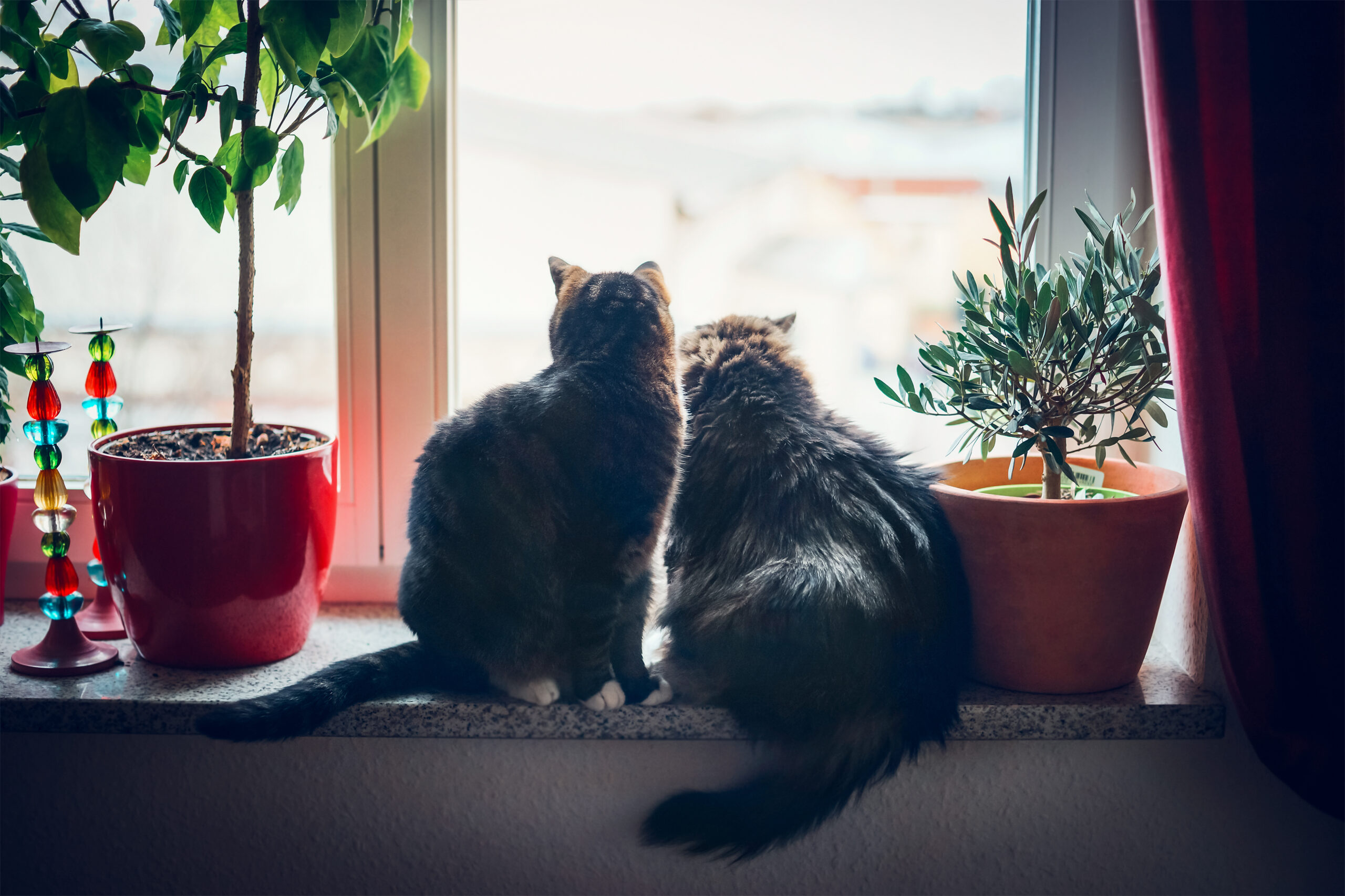I was lounging in front of the television with two sleepy cats by my side. Chai, my tortoiseshell cat, perked up when I landed on a YouTube video of chirping birds. Karma, my black cat, opened her eyes, glanced for a few seconds, then went back to snoozing. Zero interest.
Then Chai jumped up on the TV console, nearly pouncing at the screen. Karma continued to nap.
What gives? Do cats enjoy watching images on a screen, or could they care less? Is it just a matter of taste—or of what’s playing on that screen?
“Cats are riveted by movement,” Nicholas H. Dodman, BVMS, DACVA, DACVB, and program director of the Animal Behavior Department of Clinical Sciences at the Cummings School of Veterinary Medicine at Tufts University, says. “A laser pointer, a window with a view of birds, or goldfish swimming in a bowl are fascinating to watch. Cats follow moving images. Add to it an auditory component such as meowing and chirping, and most cats will show interest. It sparks their prey drive.”
Why does my cat enjoy watching TV?
According to a study in Applied Animal Behaviour Science, 125 shelter cats watched up to three hours of television a day for a few days. The programs included footage of people, prey, and a blank screen. The researchers found just over 6% of the cats watched. When they did, they focused on the prey.

“Cats like to watch birds, rodents, and other animals,” Dodman says, but noted that “they’re more interested in what’s going on outside in the real world,” not on a screen. Dodman’s own cats spend a lot of time peering out the window, watching birds from the comfort of the living room. “It’s great mental stimulation,” he adds.
A gray and blue world
There’s no dedicated TV channel for cats (whereas canines can tune into DOGTV), but there’s also tons of videos on YouTube at your fingertips. Most show images of cats and prey. These videos also pay attention to how your cat sees.
For example, we see more colors than our cats because we have red, green, and blue cones, which are special color-sensitive cells in our eyes. Our cats have green and blue but lack red cones. Basically, cats see the world in shades of gray and blue.
Using TV to desensitize your cat to noise
Cats have sharper hearing than their human counterparts. “They can hear things we can’t,” Dodman says. “We hear frequencies between 20 hertz to 20 kilohertz. Cats can hear about three times more than us.”
As a result, cats can be sensitive to some sounds, like thunder or fireworks. There are videos and “TV programs” that can help them overcome these aversions. A few videos on YouTube claim they desensitize dogs and cats to so-called scary sounds. If you do play one of these videos, stay close by.
“It’s wise to watch with them,” Dodman says. “They feel safer when you’re nearby, and over time cats can acclimate to these sounds.”
Why cats watch
TV programs that don’t focus on a cat’s hunting instincts or real-life situations aren’t usually of interest, but some unique felines will curl up and appear to “watch” Netflix with their owners. In reality, they are hanging around to feel close to you—awww!—not because they are riveted by Ozark.
That means you won’t need to throw on a Great British Baking Show marathon when you’re out of the house. Your cat won’t care.
A better option would be some of the online content tailored to your kitty’s niche interests. Try this 7-hour video of birds and squirrels, or some of these other tempting videos. Your cat might also enjoy watching nature shows, because the animals and their movements stimulate their prey drive.
In the end, though, your cat isn’t a couch potato. What they really want to watch is… you.
“Television works for some cats,” Dodman says. “What’s more important is spending time with them. They would prefer if you play with them. You can toss a ball, have them chase a laser pointer—just don’t shine it in their eyes—and talk to them. Cats are a lot like us. They’re social and want to spend time with the people who care for them.”
Caring for your cat
Whether your cat prefers Planet Earth or YouTube videos of delicious mice, they depend on your TLC. And there’s no better way to care for your cat than to make sure they’re as healthy as possible.
Pet insurance, like coverage offered by Lemonade, can help take the sting out of unexpected vet bills, plus Lemonade offers a number of preventative packages and add-ons to help cover routine care, as well as other issues that might come up.
Applying for pet insurance is fast, and so easy that your cat might be able to do it. (Don’t let your cat do it.)





